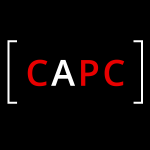The first reason and last reason for reading Michael Chabon is his prose style. We can start on page one:
A white boy rode flatfoot on a skateboard, towed along, hand to shoulder, by a black boy pedaling a brakeless fixed-gear bike. Dark August morning, deep in the Flatlands. Hiss of tires. Granular unraveling of skateboard wheels against asphalt. Summer-time Berkeley giving off her old-lady smell, nine different styles of jasmine and a squirt of he-cat.
This opening paragraph models Chabon’s operating method for much of Telegraph Avenue, his latest novel. We have a sentence containing a single piece of action. Then fragments are shored up around it, each one conveying a different sensuous aspect of the scene. Listen to the “granular unraveling” of the skateboard; rarely does an aural description so perfectly crystallize a sound in the mind. Lest we forget whom we’re reading, the “squirt of he-cat” reminds us that for all its virtuosity, this book will also be full to the gills with attitude and quirk.
His quirks notwithstanding, Chabon offers us some real feelings as well. In one scene, aloof teenager Titus obliquely reveals a history of abuse at the hands of other residents in the house where he’s been taken in; when he takes off his glasses to wipe a tear, the frame breaks and the pieces fall to the floor. Julie, Titus’s self-serious friend and self-discovering lover, picks up the pieces of Titus’s glasses and sits to mend the frames at
the bare pine table, its surface an action painting of Testors paint, scorched black in patches by the glue guns and the glowing elements of soldering irons, inscribed with an illegible cuneiform of X-ACTO-blade scars, where he had been wont, in the limitless trances of his loneliness, to assemble his scale models of AT-ATs and Gundam Wing fighters, and to ornament his little armies of orcs and paladins, and to invest the unspent and endlessly compounding principle of his inner and only life.
Capturing this accumulation of time and meaning in a desk and then opening its history to include the moment Julie is experiencing, Chabon brings to the fore all the risks and sweetness that attend to our moments of intimacy and attempts at connection with other people. My heart aches for Julie because Julie is lonely and might become lonelier still if he missteps. It’s a picture of how love actually plays out in a lived moment, as opposed to how love is often pictured in all principled and Platonic abstraction in the books of philosophers and social scientists.
This brings to mind James K.A. Smith’s book Imagining the Kingdom. As Smith writes,
We need stories like we need food and water: we’re built for narrative, nourished by stories, not just as distractions or diversions or entertainments but because we constitute our world narratively. It is from stories that we receive our “character,” and those stories in turn become part of our background, the horizons within which we constitute our world and engage in action.
Smith’s point is that narrative and metaphor are essential for making sense of human life; it’s through them that we gain a sense for the sort of world it is good to desire, and the sort of people it is good to become. When Chabon turns his stylistic gifts upon the world in his fiction, he transfigures it for us. We receive it back as an aesthetic object and find that it has opened up for us to reveal new secrets and depths. These flights of verbal imagination help us see the world anew, to recognize the possibilities latent within it that we can help to bring out. They also help us to see the holy in the mundane, as even a cascade of rice across a counter becomes a cause for wonder, if captured in the right words. (The right words include brushes and high-hats, for the record.) Smith recognizes that this is an essential component of worship and Christian spiritual formation: we grow primarily through the cultivation of our loves, a process enacted through the cultivation of our imaginations as we picture the world in all its strangeness, beauty—and pain.
This is, finally, why I love Chabon, but reserve my nightstand long-term for someone else. The worlds he creates are buoyant, quirky, and delightful, but something is missing. Telegraph Avenue is replete with feeling, populated with characters beloved of their author, and shot-through with energy and beauty. And yet, an essential and hard-to-describe quality seems absent to me: spiritual urgency.
Like John Updike before him, Chabon’s primary reason for plying this craft is his astounding talent for it. His stories sometimes hunch under the weight of all the description he tries to cram in, because when you’re a genius-level imaginative stylist it’s hard not to put to the page every brilliant phrase that crosses your neural pathways. Style-wise, most writers lag far behind Chabon on the sentence level, but Chabon seems to struggle to find the motive for creating that other writers are born with: some truth about human life that demands to be communicated, regardless of the darkness it invokes.
This would be an unfair criticism if Chabon’s gifts didn’t seem to so clearly portend the sort of depth I’m after. My sincere hope for Chabon is that he will step into his own as an investigator of the deeper spiritual caverns. Telegraph Avenue is not The Great American Novel, but if Michael Chabon embraces the serious artistic vocation that befits his aesthetic gifts, his next book could be.










